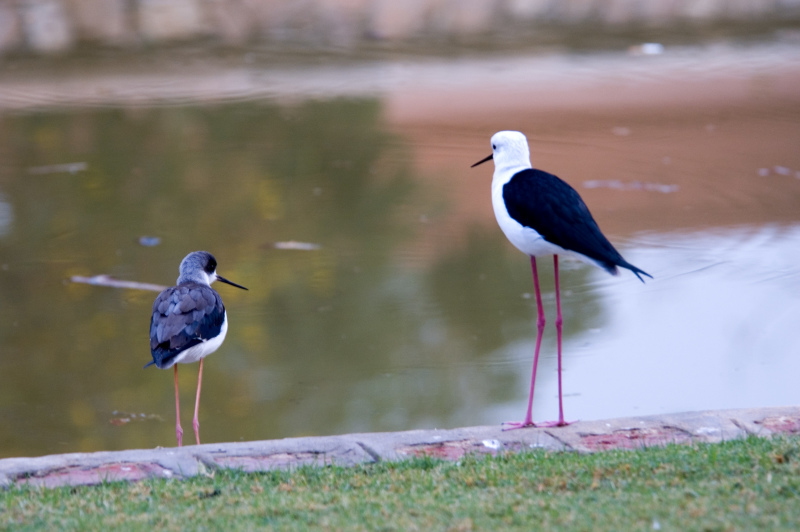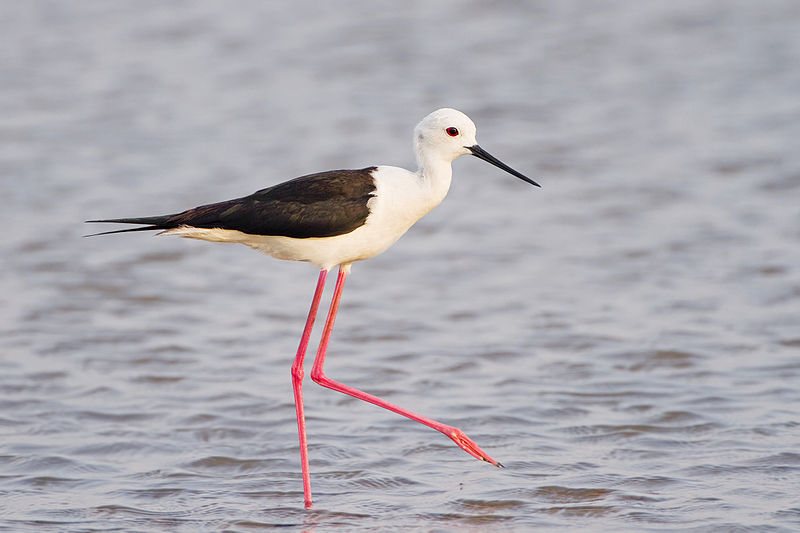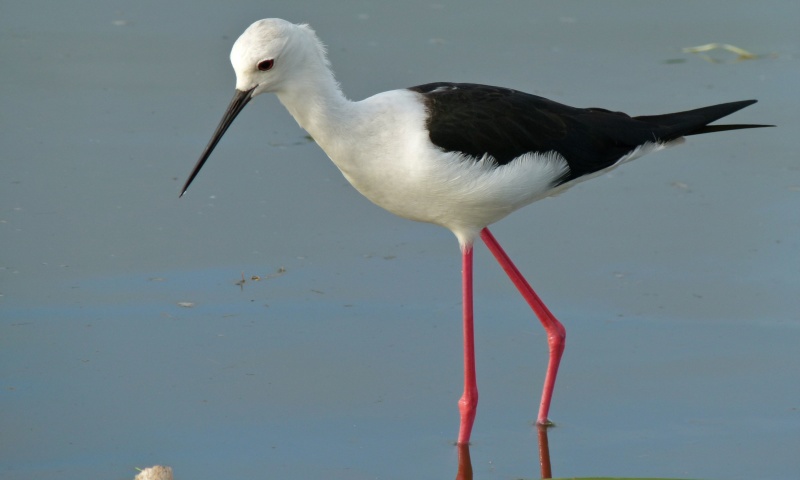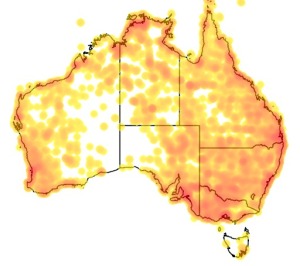
©Paul Asman and Jill Lenoble: Black-winged Stilt (Himantopus himantopus): The juvenile on the left is the same height as the adult on the right; it's just standing in the water.
Colours
Distinguishing features
They have long pink legs, a long thin black bill and are blackish above and white below, with a white head and neck with a varying amount of black. Males have a black back, often with greenish gloss. Females' backs have a brown hue, contrasting with the black remiges.
In the populations that have the top of the head normally white at least in winter, females tend to have less black on head and neck all year round, while males often have more black, particularly in summer. This difference is not clear-cut, however, and males usually get all-white heads in winter.
Immature birds are grey instead of black and have a markedly sandy hue on the wings, with light feather fringes appearing as a whitish line in flight. (Wikipedia)
Size
- From 30 cm to 38 cm (Length of specimen) - applies to Adults
Wingspan
- Up to 78 cm
Synonyms
Similar taxa
-
Animalia:
Pied Stilt (species: Himantopus leucocephalus)
It is very difficult if not impossible to separate Himantopus himantopus from Himantopus leucocephalus based on physical features alone. The identification at species level should be based on calls. The presence of the thick black hind neck plumage in Himantopus leucocephalus, the size and the location can be used as supporting circumstances only. In all other cases, it is recommended to just report at the genus level.
Distribution
Distribution and habitat preferences
It is now widely accepted that the scientific name , which was formerly applied to a single almost cosmopolitan species, is now normally applied only to the widespread form from Eurasia and Africa.
The breeding habitat of all these stilts is marshes, shallow lakes and ponds. Some populations are migratory and move to the ocean coasts in winter; those in warmer regions are generally resident or short-range vagrants. (Wikipedia)
Local abundance
- Cape Kidnappers, New Zealand: common
Diet
They mainly eat insects and crustaceans, found in sand or shallow water.
Web resources
References
- Simpson, K., N. Day and P. Trusler (2004). Field Guide to Birds of Australia: 7th Edition Penguin Group (Australia), Camberwell, Victoria.


